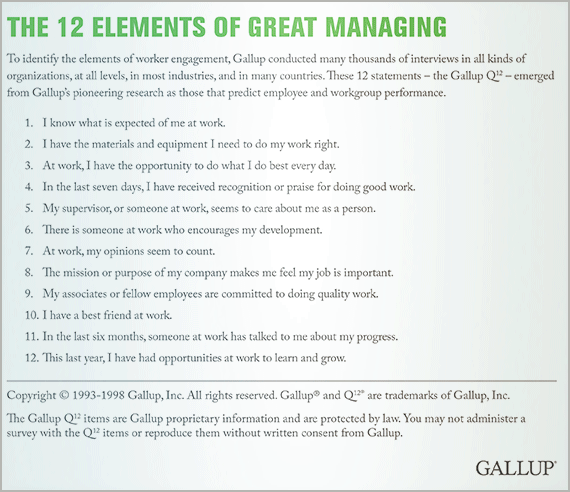Many managers don't have discussions about employee engagement regularly or often with their team.
Measuring employee engagement is the first step great managers take to build stronger teams. But the best managers do more than just measure engagement. They listen to their employees and use their engagement data to guide their teams to improve performance. This is as true in the healthcare industry as in any other. By actively managing for engagement, performance-driven managers positively influence business outcomes and patient care.
For healthcare managers in acute and non-acute care settings, actively managing for engagement means using insights from employee engagement surveys to have meaningful conversations with employees. It also means setting strong goals that encourage positive change and foster individual and team engagement. To succeed at these tasks, managers must make engagement a priority and continue learning new tactics to engage and strengthen their team.
Five steps for getting results with action plans
These five steps can help healthcare managers focus and streamline the goal-setting and impact-planning process -- and turn employee engagement results into clinical improvements:
- Start with the big picture. Healthcare leaders love data. But some love data so much, they get lost in the numbers and forget the purpose behind collecting them. High-performance managers understand and can interpret their employee engagement survey results, but they don't lose sight of the ultimate goal: creating better outcomes for patients and employees. By regularly communicating the purpose and outcomes of higher engagement, managers give direction and establish a firm foundation for improvement.
- Discuss your purpose. Many managers don't have discussions about employee engagement regularly or often with their team. But to maintain momentum and commitment, managers must make discussions about engagement central to team communications. Great managers make sure their team can answer these questions:
- Why do we take Gallup's 12-item employee engagement survey (the Q12)?
- What's in it for the team?
- What's in it for the organization?
- What's in it for our patients?
- Aim at improving a clinical or operational outcome. Once your team understands the big picture and how engagement leads to improved outcomes, set a clinical or operational goal -- such as reducing patient falls, cutting central line-associated bloodstream infections, or reducing readmissions -- and make achieving it a priority for your unit or department. Discuss why this goal is important, and ask employees to identify individual and team strengths that can help them meet it. Here are some questions to spark this discussion:
- What goal should our team focus on for the next several months? What would make the biggest difference for our patients?
- Where do we have strengths as a team? How can we use these strengths to help us meet our goal?
- What specific actions can we take to improve this outcome?
- Integrate, align, and discuss. After you set a clinical or operational goal, use the Q12 elements as a framework for action planning. For example, if your team has set a goal to improve purposeful hourly rounding, pose the following questions to the group:
- Do you know what's expected of you when doing purposeful hourly rounding?
- Do you have the materials and equipment you need to round effectively?
- How can we use recognition or praise to advance our efforts to improve rounding?

Discussion is crucial to achieving operational and clinical goals. Meaningful, regular conversations help connect the dots between engagement and goals, bring action plans to life, and build healthy relationships among employees and managers. Highly engaged employees and teams provide better care to patients -- and ultimately contribute to improved outcomes for patients and for the hospital.
- Commit to an action plan. The next step is to commit to a plan for improving engagement and the clinical goal. Teams should keep the plan simple, and managers should get employees involved in determining the actions to take. Encourage employees to "own" the plan by asking questions like:
- What are you willing to commit to over the next [specific time period] to achieve our goal?
- What support do you need from me as your manager?
- Which of the 12 elements will help us achieve these commitments?
Accountability is key to success in building engagement and achieving goals. To help your team stay on track, make sure your team's goals are SMART: Specific, Measurable, Achievable, Relevant to clinical outcomes, and Time-bound. Keep commitments front and center. Managers and teams should regularly discuss goals in team meetings and huddles to evaluate progress, ensure employees have all necessary resources, maintain accountability, and make adjustments as needed.
Planning for success
When it comes to improving employee engagement and clinical outcomes, measurement is just the beginning. Having a plan and making the Q12 elements the center of regular team discussions will lead to improved engagement, better performance, and higher quality care. Managers must emphasize the big picture of engagement, actively listen to team members, and encourage employee involvement in the process. By weaving engagement into their management style, healthcare leaders can build and sustain engagement -- and improve the employee and patient experience.
